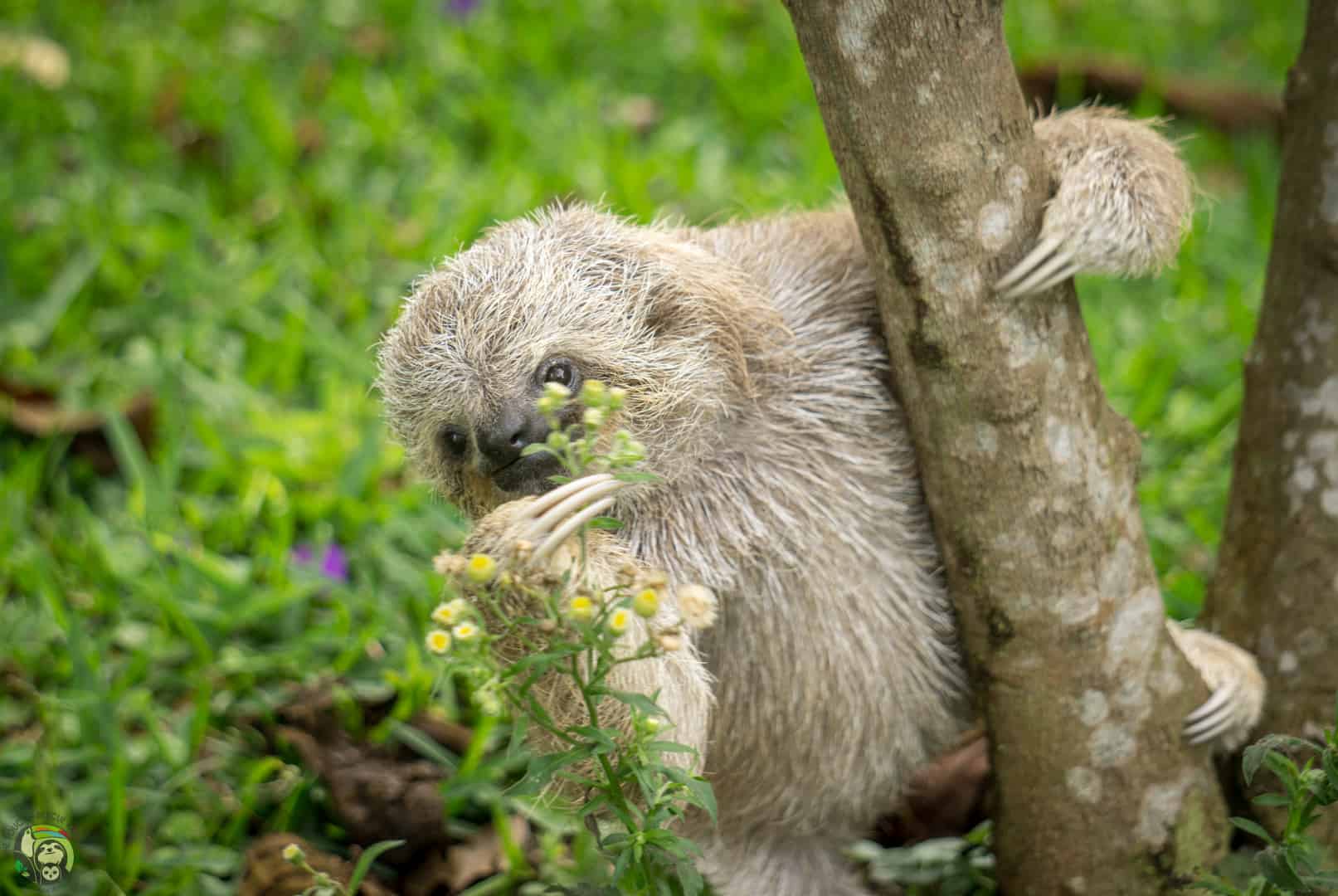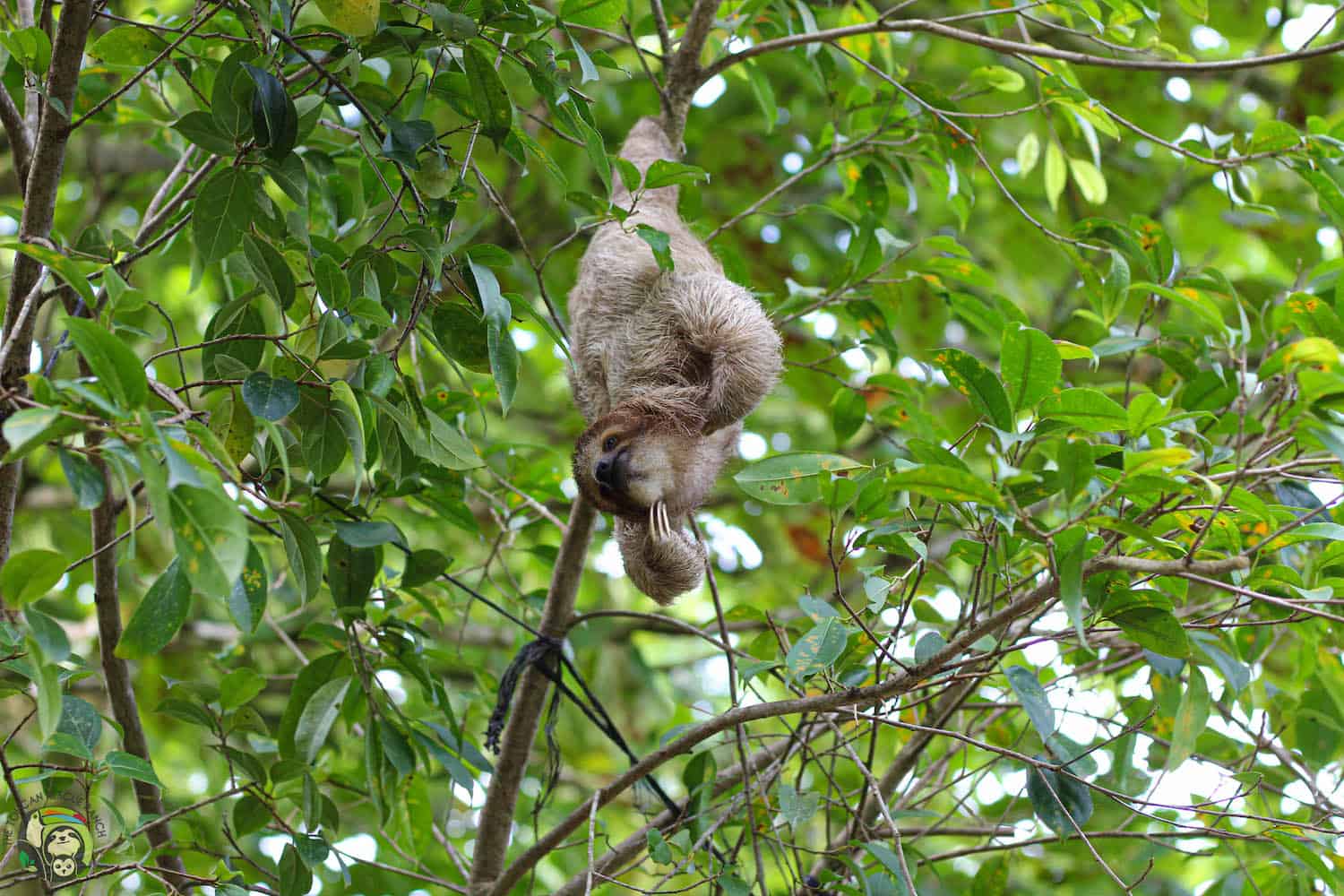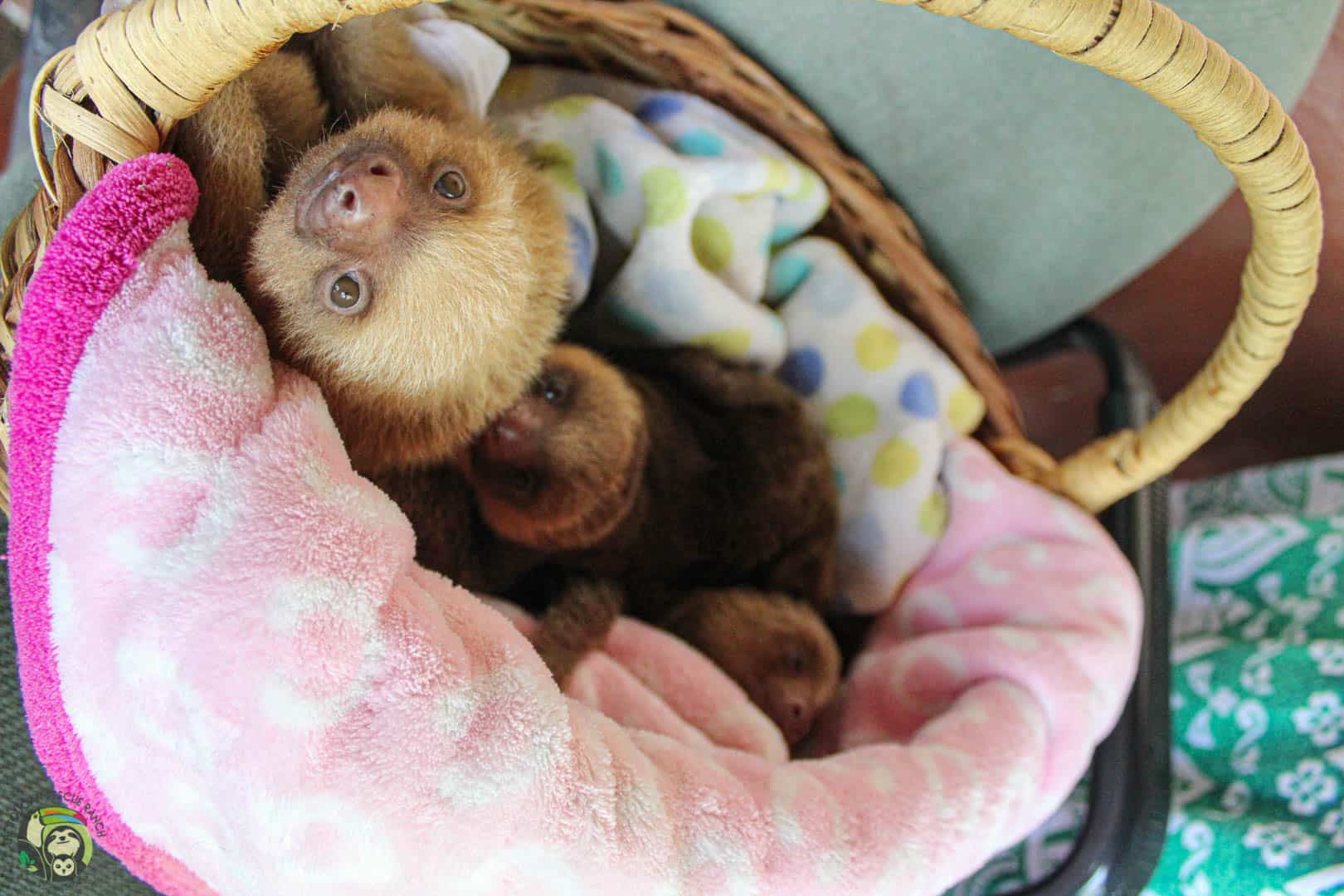Sloths are beautiful, graceful creatures that blend in with their natural environment. There are so many things we can learn from these understated animals — here are just a few:
Eat your greens
Sloths are omnivores, meaning their diet is made up of both plants and animals. But their diet primarily consists of lots and lots of leaves.
We also need to make sure to eat a healthy and balanced diet. For humans, this means eating at least our five portions of fruit and veg every day. Have you had yours today?
Slow down

This diet of lots and lots of leaves is actually poor in nutrients and low in calories. Because of this, sloths have to have a very slow metabolic rate, which in turn leads to their slow lifestyle and means they are only able to travel up to 6 cm per second (at top speed). But for sloths, this slow speed is what enables them to survive — and survive they have, for over 64 million years, so they must be doing something right.
It is easy to get caught up in the day-to-day today and rush along. But this is how you miss the little things. Today, take a leaf out of a sloth’s book and take it slow. See what you can notice whilst you’re not rushing along.
Get a good night’s sleep
Again because of their slow metabolic rate, sloths will sleep for between 9 and 10 hours a day. They sleep high up in the trees, and their fur is camouflaged green with algae both of which help to protect them from prey.
Sleep is such an important part of life; most healthy human adults need between 7 and 9 hours of sleep. If you’re 17 or under and your body is still growing and developing, you need 10+ hours of sleep, just like a sloth. Sleep is a period of time when our bodies are still quite active; they are taking care of a lot of important processing, restoration, and strengthening. Why not make like a sloth tonight and get to bed nice and early?
Smile more
This is a slightly tenuous link, as 3-fingered sloths only look like they are smiling. This has nothing to do with their emotions, it’s just the natural shape of their mouth and face colorings.
However, for humans, smiling is so important. Smiling is a natural behavior, not learned from our parents; babies will actually start smiling at only 6 weeks old. Studies have shown that the act of smiling can make us less stressed and boost our mood by triggering the release of dopamine and serotonin. Smiles are also contagious, so be sure to spread the smiles next time you’re out and about.
Play to your strengths

Sloths spend most of their lives upside down, and their bodies are highly adapted to this lifestyle. They have long limbs with curved claws, which enable them to hang from branches. They even have adaptations that fix their internal organs in place with adhesions preventing pressure on their lungs.
Think about what your strengths are. What are you particularly good at that could lead to a future career or a fantastic hobby?
Scientific breakthroughs
As well as the points above, sloths are helping scientists with breakthroughs in fighting diseases. A recent study by the Smithsonian Tropical Research Institute revealed that some species of fungi found in a sloth’s fur are effective against strains of the parasites that cause malaria and against some types of breast cancer. This research is still in its early stages, but it will be amazing to see how these findings help science and medicine over the next few years.
About Katie Grant
Katie is a 25-year-old Zoologist from the UK. She loves nothing more than hiking in nature with her camera in search of wild creatures. From cute and fluffy mammals to creepy-crawly insects, Katie is fascinated by them all.
After completing her degree, Katie spent six months in Costa Rica working with the Toucan Rescue Ranch assisting with their sloth rehabilitation and release program. Since then she has traveled the world photographing and filming wildlife using social media as a tool to teach others about the wonders of the natural world.
This article was produced by The Toucan Rescue Ranch. The Toucan Rescue Ranch specializes in helping wild animals recover so that they can be reintroduced into the wild.






